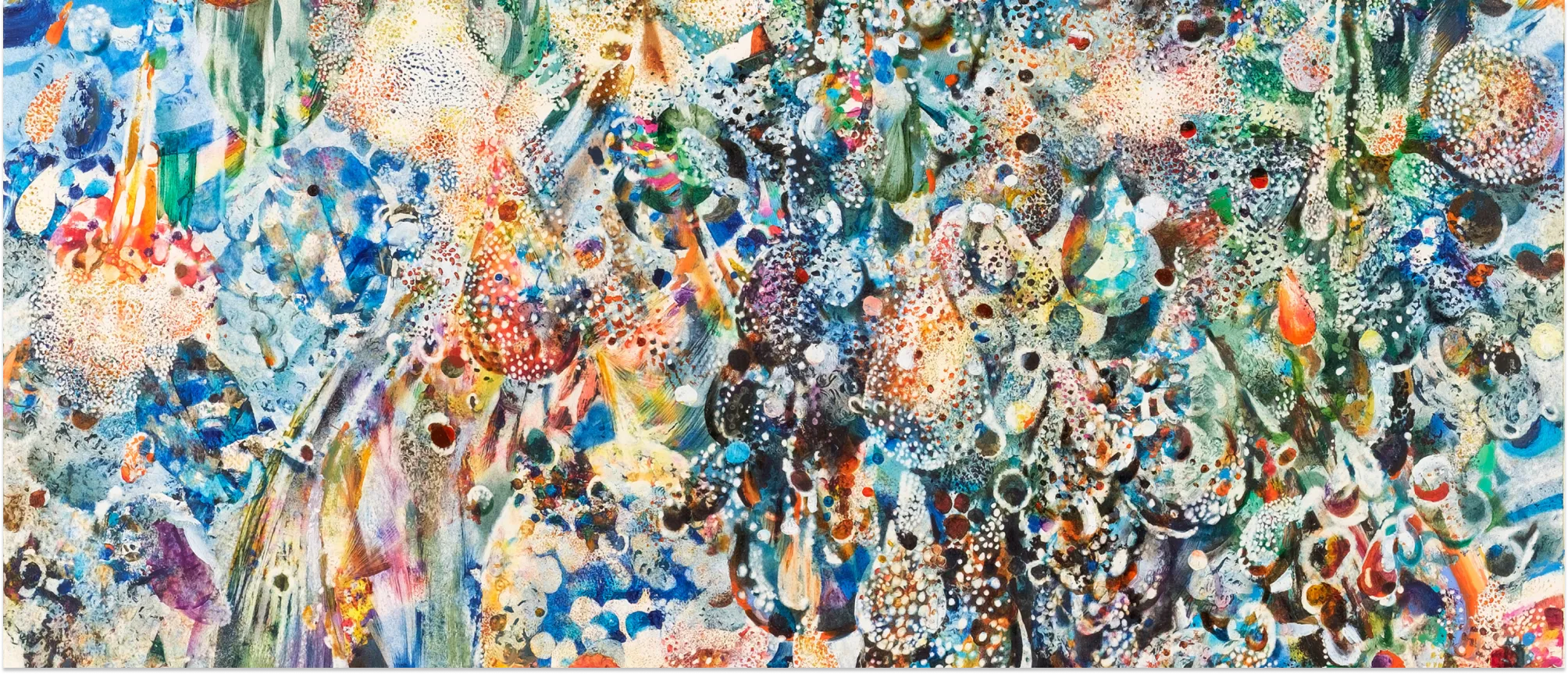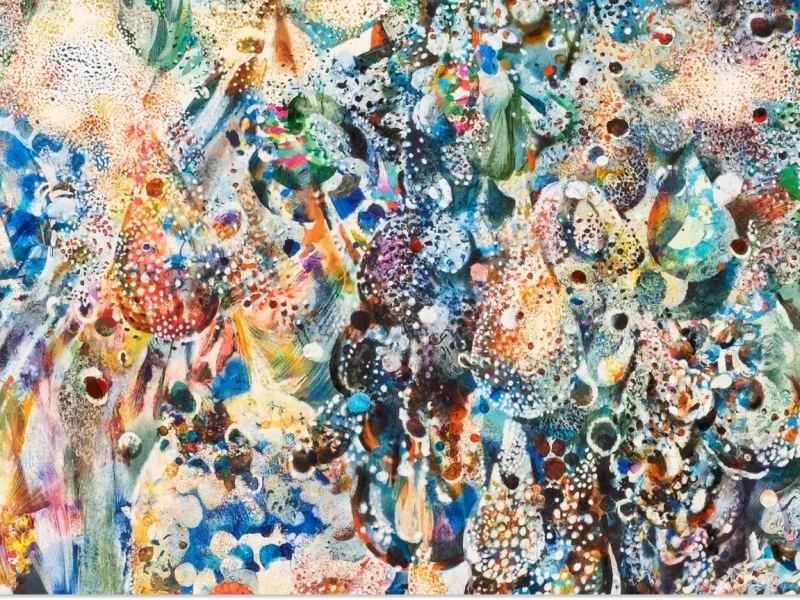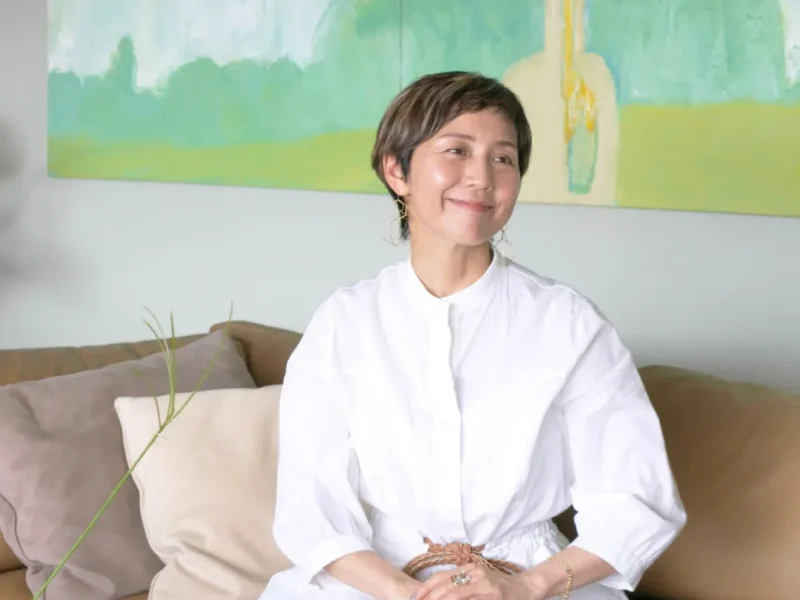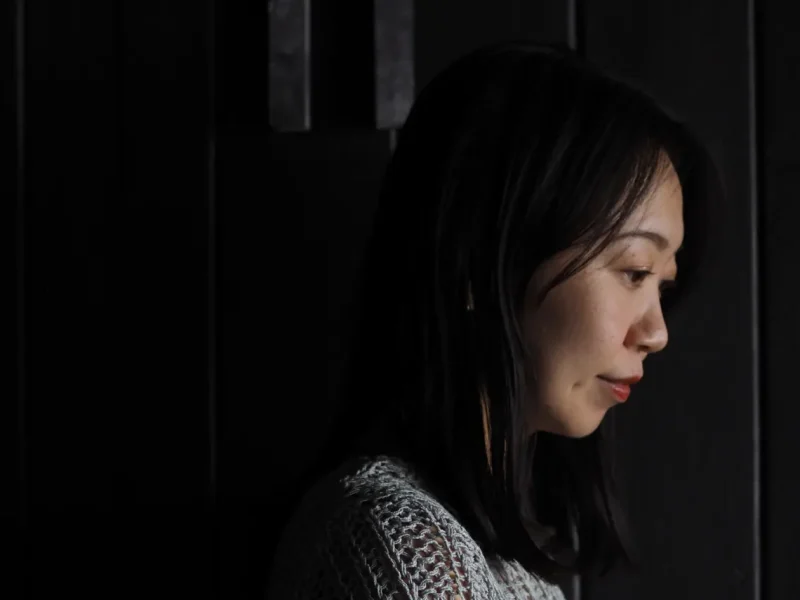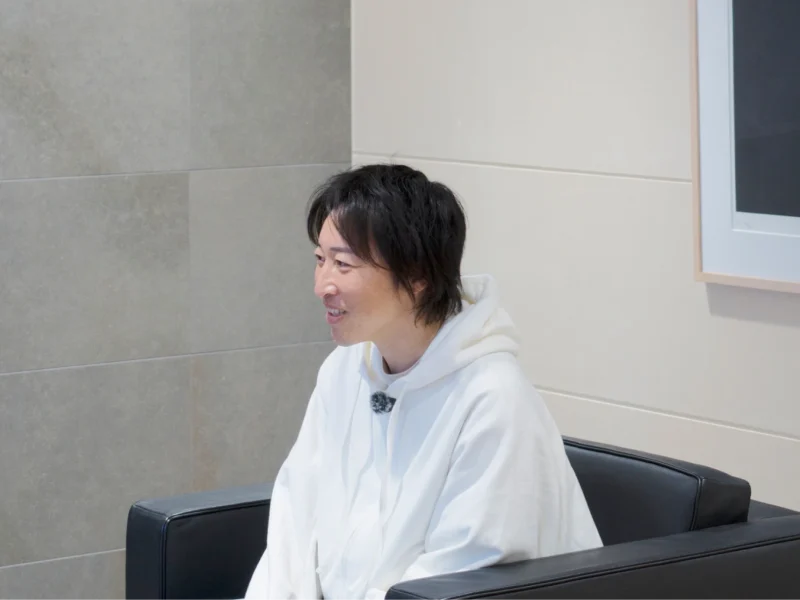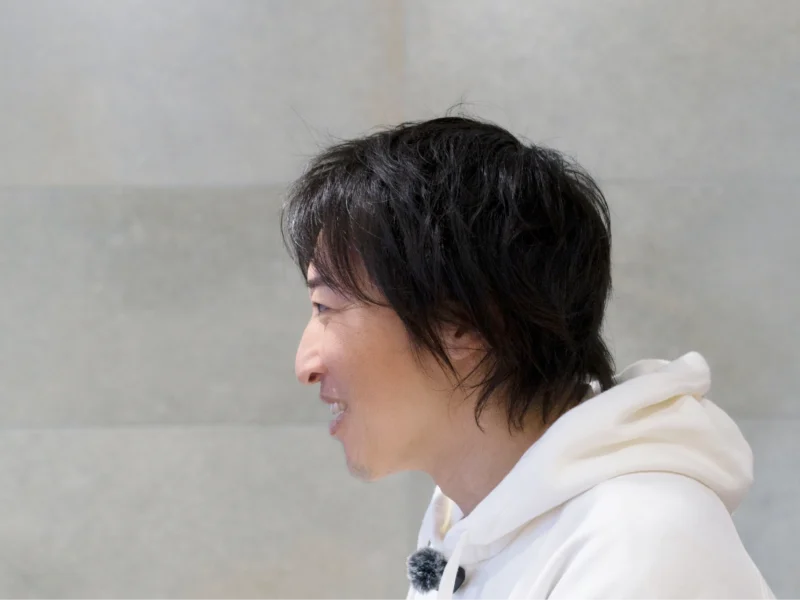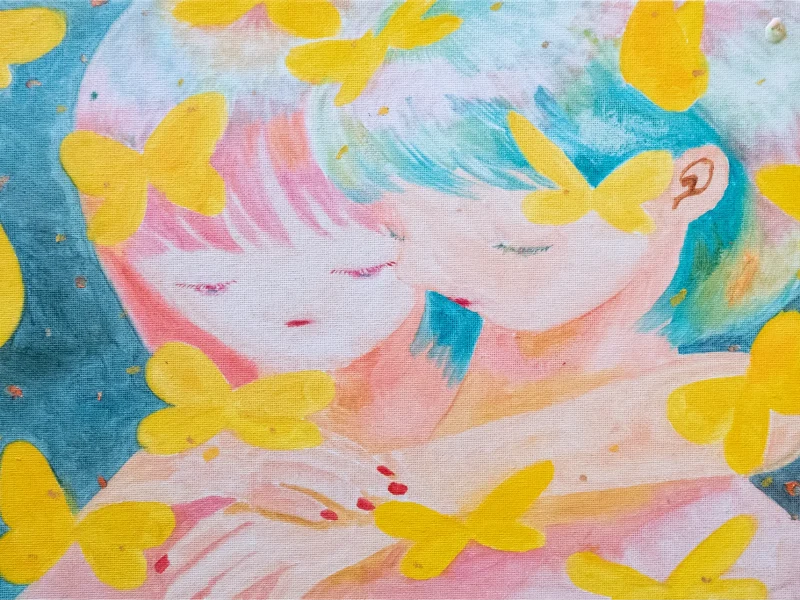Untitled (exchange), detail, 2025 © Stefan Guggisberg. Courtesy Galerie EIGEN + ART Leipzig/Berlin.
Working from his studio in Leipzig, Germany, Stefan Guggisberg has developed a distinctive, process-driven approach to painting. Rather than starting with a blank surface, he begins with paper already saturated in oil paint, gradually revealing unexpected forms by scraping back the layers.
This September, Guggisberg will exhibit his paintings with Galerie EIGEN+ART at Tokyo Gendai. In this interview, he reflects on his daily rituals, the important role of intuition in his process, and ruminates on the future of art in the age of AI.
“Art is perhaps the freest space we have as humans to reflect on or express our thoughts, emotions, and beliefs”
Why did you decide to become an artist? Was there a specific moment, person, or memory that led to choosing this path?
I grew up in an artistic environment, so becoming an artist didn’t feel like a big leap – it was a world already familiar to me. I became an artist at 21, during a profound personal crisis. I realised that art was the only field where I could pose – or perhaps receive answers to – the deep, existential questions that were troubling me.
What do you find most enjoyable, and most challenging, about being an artist?
Art is perhaps the freest space we have as humans to reflect on or express our thoughts, emotions, and beliefs. The greatest challenge, I think, lies in continually clearing the path for oneself – ensuring that the mind doesn’t restrict this freedom, so that one can truly see and make use of the full potential.
Where do you make your work, and what does a typical day in the studio look like for you? Do you have any rituals that allow you to lock into the work?
My day usually begins at 8am after my daughter leaves for school. My studio is a quiet space in an old factory building, overlooking the roof of a tram depot. A small river runs between the buildings, lined with trees and visited by birds I like to watch throughout the day. As soon as I enter, I’m drawn into my paintings. My gaze moves through the pictorial spaces, catching on areas that call for the next steps. But first – a cup of green tea to fully wake up. When a painting requires full concentration, I prefer silence. But during more repetitive parts of the process, I often listen to conversations on social issues or philosophical questions. I’d really recommend Bayo Akomolafe’s podcast discussing artificial intelligence – he’s one of my favorite contemporary philosophers.
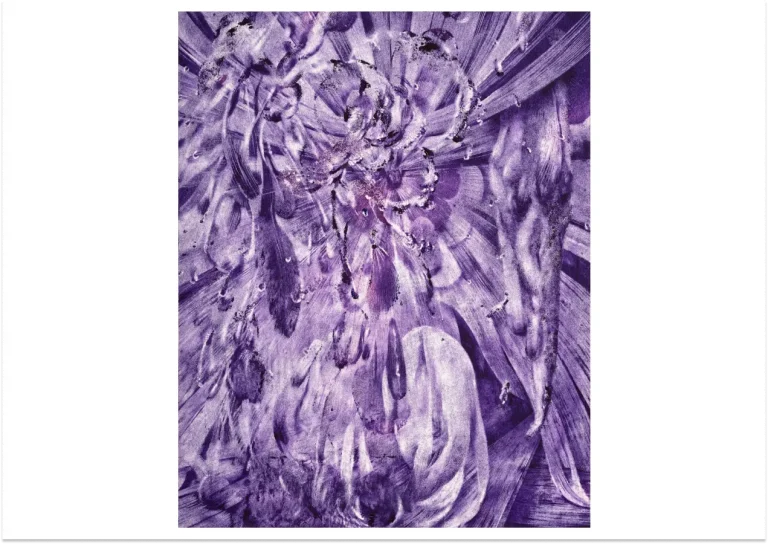
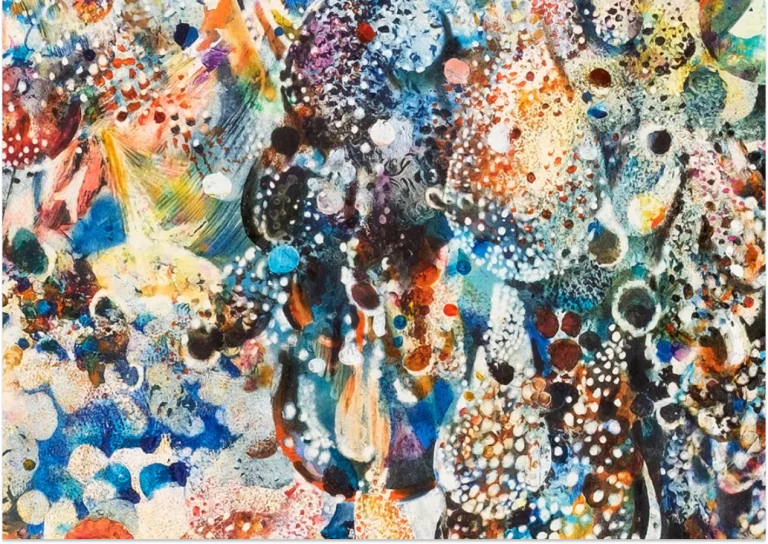
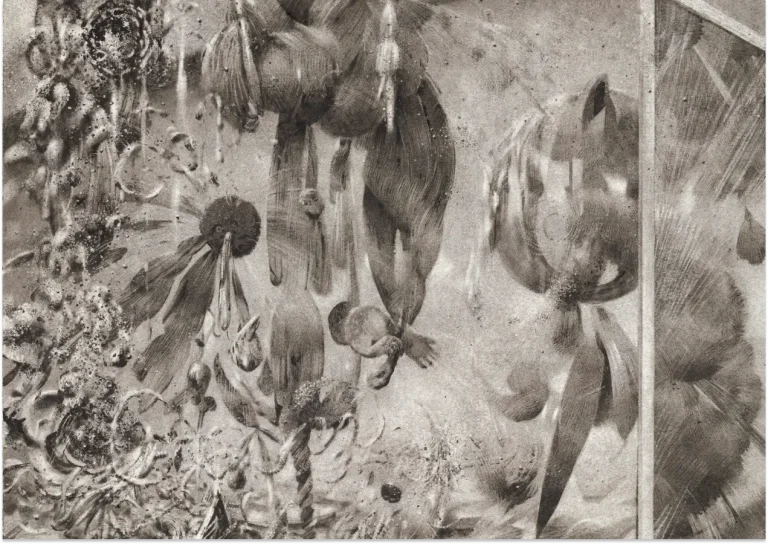
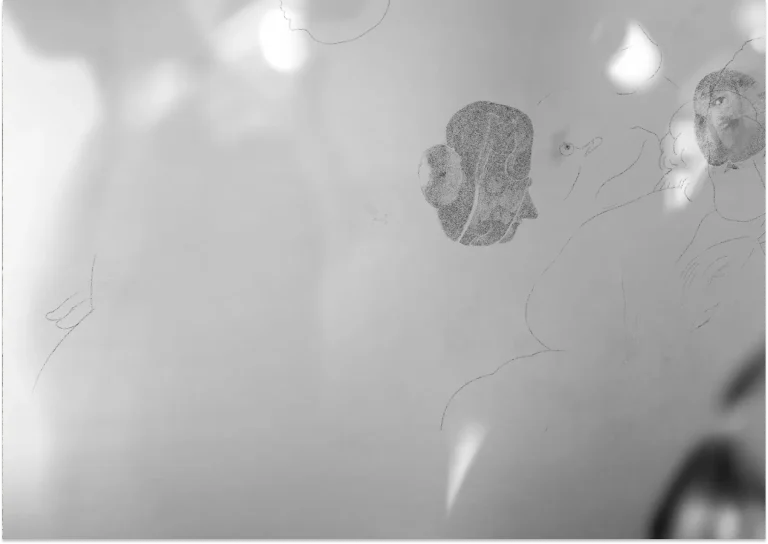
What themes or materials are you exploring in your practice right now?
After spending some time drawing extensively on an iPad, I’m currently focusing again on working with oil on paper. The themes and elements in my paintings emerge organically during the process itself. At the core of my practice is a desire to understand how, through contemplation, chaotic abstract forms can suddenly give rise to meaning. My work is an inquiry into how reality functions – and how a sense of the world begins to take shape.
Your process of building and revealing layers has been likened to that of an archaeologist. Would you say that’s an accurate analogy?
The analogy to archaeology feels somewhat misleading, because archaeological excavations uncover things that already exist in material form. In contrast, my painting process is more about how things emerge and take shape from a living, dynamic structure. The things I uncover are not artifacts of the past, but rather a kind of deeper knowledge about living interconnections and the nature of genesis itself. My scientific interests lie more in the realms of modern physics and philosophy than in archaeology.
“I wonder whether AI art will move us as deeply as the art of past eras – and what new perspectives it might offer”
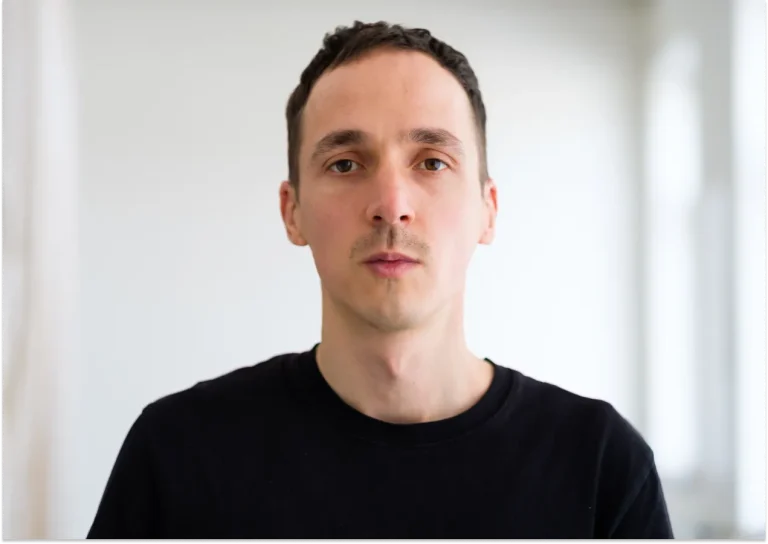
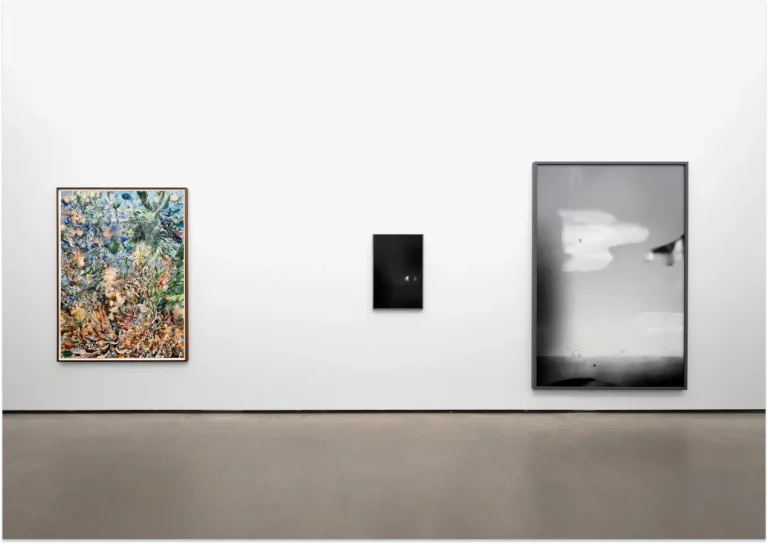
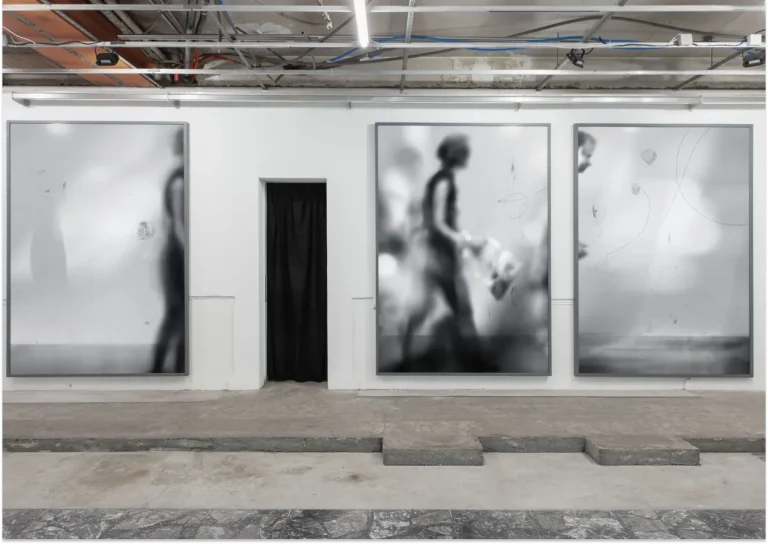
Are there any artists – of any medium – that are inspiring you right now?
Of course, certain artistic positions always resonate at different times. Right now, I’m drawn to the broader shifts happening in the art world through AI. In painting, it’s remarkable that we can reflect on 40,000-year-old cave drawings alongside works made using advanced technology. I’m curious to see what kind of images will emerge from this black box of AI. Like my own practice, AI follows a process-based approach and produces results that aren’t entirely predictable. But unlike my work – guided by intuition and contemplation – these images are created under entirely different conditions. I wonder whether AI art will move us as deeply as the art of past eras – and what new perspectives it might offer.
Finally, what’s your relationship to Tokyo and what’s your favourite thing about this city?
I’ve been to Japan twice – first to Yamanashi in 2019 as an artist-in-residence, then in 2022 as a guest professor at Musashino Art University. What fascinates me most about the city is the contrast: the dense, bustling streets and, just around the corner, moments of complete stillness in a quiet courtyard. And of course the Shinto shrines, often hidden among the most futuristic buildings, are especially captivating. They offer a path to the transcendent in a way that moves me deeply.
Thank you very much! We look forward to seeing you in September.

Stefan Guggisberg
Stefan Guggisberg (b. 1980, Thun, Switzerland) lives and works in Leipzig, Germany. After studying graphic design, photography and painting, he completed a master class under Neo Rauch. In 2022, he was a visiting professor at Musashino Art University in Tokyo. His process-driven paintings explore perception and abstraction through layered, subtractive techniques. His work has been widely exhibited across Europe, including solo shows with Galerie EIGEN + ARTt and Kunstverein Gera.
Visit Stefan Guggisberg’s official website here


